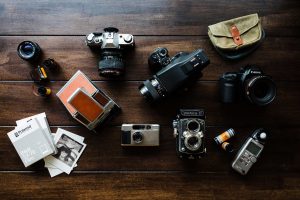In the digital age when taking pictures is as simple as pressing a button on your phone, bobservational emerges to be an art full of anticipation. As with making pancakes, it’s impossible to predict how they will turn out before the pan sizzles.

Film photography with its whirring film cameras and waiting rolls of films offers a tactile delight that digital photography sometimes lacks. Each roll is a canvas for light and dark, which transforms ordinary moments in to potential masterpieces.
The process of taking pictures on film is akin to learning to write using your non dominant hand for those who are accustomed with the instant gratification that digital photography offers. But this return to basics is precisely what makes the art of film photography so captivating. The wait between taking a picture and seeing its result makes photographers engage with their subject more. It is about slowing down and considering each shot very carefully. Each click of your shutter can cost you in both film and opportunity.
Its physicality plays a major role in its appeal. It’s almost a ceremony to load film into the camera. This requires precision, attention, and care. You must align the film exactly right before closing the camera’s back door. It’s not possible to delete a frame.
The choice between film and digital isn’t about nostalgia, or even about resisting the modern technology. Instead, it’s about accepting imperfections. Film grains give images a unique character, and can often add warmth and dimension that digital photos lack. They are like fingerprints, no two rolls of film develop the same way.
The mood and story that photographs convey can be dramatically altered by the type of film used, whether it’s black andwhite or colored. Black and black films are a great way to remove color distractions and focus on textures and contrasts. Color films may portray reality with vibrant hues, or in muted tones, depending on the chemical makeup.
Then you can begin the most thrilling part: developing your photographs. The transformation of your kitchen or bathroom to a temporary darkroom can be a magical experience. The red lightbulb glows softly while images begin to appear on paper soaked in chemicals.
Don’t forget the challenges too! Film photography challenges patience at every stage, from manually focusing lens to guessing exposure setting without immediate feedback via an LCD. It is important to learn from mistakes.
Talking about mistakes… let’s discuss those unplanned light leaks or accidental doubling exposures. They could ruin an image -or create something surprisingly magical. These happy accidents create images that would never have been possible to replicate or plan digitally.
These stories are told by film photographers all the time: tales that have been spun out of errors and turned into triumphs, as well as anecdotes describing ‘the shot’ which was destroyed because a technical flaw was overlooked.
The choice of film is a choice for adventure. It’s not just about capturing a picture, but the thrill is in the physical medium whose quirks create beautiful and unpredictable results.
Film photography is the perfect way to express your creativity without being restricted by pixels. It also allows you to discover new things in our increasingly predictable lives. Who knows? You may fall for its cluttered charm! Each photograph tells not just what you see but also whispers tales of how it was made.